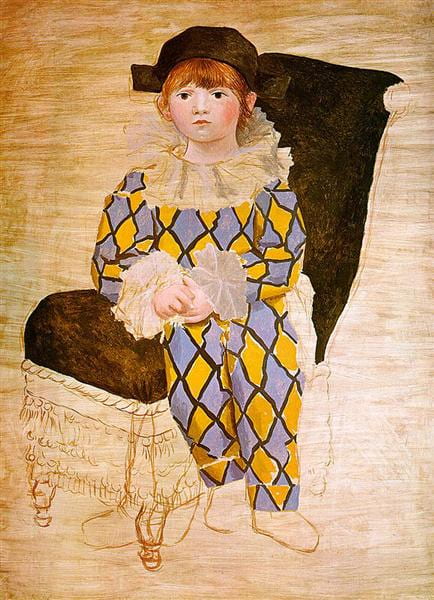
Pablo Picasso, Paul as Harlequin. 1924.
Fair Use.
This artwork shows a child.
Look at the child.
What do you think about?
Look at the artwork again.
An artist made this.
What did the artist want you to see?

Portrait by Corbin. Grade 1. 2015.
Materials:
-
PENCIL, COLOR PENCIL, MARKERS
-
paper
-
scarves, hats, large boots and old clothes

1. Sketch a portrait of the person across from you at your table.
2. Look at your model carefully for details to add to your drawing.
3. Make sure you include; eyes, eye lashes, eye brows, ears, nose, mouth, lips, teeth, hair, shoulders, arms, legs, feet, etc. to make your person look as real as possible.
4. Color in your drawing with colored pencils or MARKERS.
5. You can add a background using your imagination if you have extra time.
Extensions
Perceptual Awareness: Secure artworks or reproductions that portray people. Have the class practice looking at the artwork from the vantage point of both model and artist.
Science: Draw “from life”, using such models as a small animal (mouse), an aquarium with fish or potted plants. Do not insist on accuracy and drawing, but encourage attention to details.


